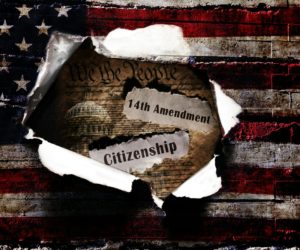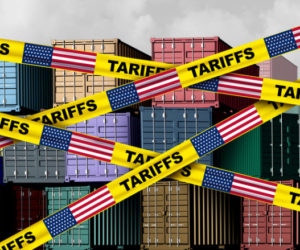This guest column is from Ned Lips, the second of his submissions we’ve published. See here for the first. As always, “Guest Voice” posts do not necessarily represent the opinions of TMV or its writers.
President Bush has called for dramatically increased powers for the Executive Branch/Treasury. Before we make that leap, perhaps we should evaluate who is really responsible for the current economic crisis. The answer: The Federal Reserve abetted by the Executive Branch. With relatively limited power, they collectively destroyed our economy. Can we afford to make them more powerful?
A Bit of History
In the 1960s, the now defunct Fannie Mae was re-chartered to buy mortgages from banks, bundle them, register the bundles as securities, get them rated by agencies like Standard and Poor’s, and sell them to investors. These were designed to be long-term investments whose value was based on the underlying loans.
In the 1980s, investment bankers began to hold auctions where mortgage-backed and bond-backed securities could be sold. Auctions were held more or less monthly. Investors began to purchase Auction-Rated Securities (ARS) as short term, high yield and fairly liquid investments.
ARS were rated from investment grade, AAA, to “junk” quality. The latter came with the highest possible return on investment and the highest level of risk. Bundled sub-prime loans were usually rated as junk or nearly junk. ARS were purchased and sold based upon those ratings and had been reliably traded up until the recent crisis.
Fed Overreacts to 9/11
Smart people were investing in securities rated by smart people that were created by smart people and traded by smart people for years. What drove this recent and unprecedented situation?
The answer is simple; The actions of an unbelievably irresponsible Federal Reserve. The Federal Funds Rate is set by the Federal Reserve’s Board of Governors and is the rate at which bank’s borrow money. It is the leading driver of interest rates.
On September 17, 2001 the Fed lowered this rate to 3.0%. Historically this was seen as a drastically low rate, reached only once since 1962. Nonetheless, in an over-reaction to 9/11, the Federal Reserve lowered the Fed Funds rate even further, below 3.0% for the first time in 40 years.
Between July 1990 and January 2001, the Fed Funds rate hit a high of 8% (July 13, 1990) – and a low of 3% (September 4, 1992) – averaging about 5.25% during that time.
On January 3, 2001, the Fed Fund rate was 6.0%.
Again, on September 17, 2001, it was slashed to 3.0%.
On October 2, 2001, the Fed dropped this rate to 2.5% — the first time in 40 years, since the early 1960s, it had been below 3%.
The Fed then dropped the rate even further on December 11, 2001 to 1.75% — a drop of 4.25% in less than one year.
On June 25, 2003, the rate was cut again to 1.0%.
While all previous forays below 3.0% lasted only briefly, this time the Fed Funds Rate sat at 1.0% for a full year and did not eclipse 3.0% for three years and eight months. This time of incredibly low interest rates is simply unprecedented in U.S. history and led to dire but predictable reactions in the markets.
Economically Reasonable Response
No lender had any experience in such an environment. Spurred by post-9/11 Executive Branch rhetoric, banks did what banks do, they made loans, with far-reaching consequences that laid the foundation for the disaster we are currently experiencing.
With cheap money:
1. Banks made more sub-prime loans than usual.
2. People who could not afford a home now could.
3. Demand for homes went up.
In 2004, when rates were 1.0% — in the midst of a presidential campaign — home ownership hit all-time highs. Millions achieved a dream they never believed they could reach.
1. The Bush Administration (thanks to Phil Graham) reduced mortgage regulation.
2. When demand increased, home prices rose.
3. Home builders built more homes.
4. Builders borrowed money.
5. Lenders saw prices rising and rationalized higher loan-to-value ratios to make more loans.
6. Home building increased to meet the new demand.
7/ Mortgages were bundled, rated and auctioned off just as they had been for over 20 years.
Who could have predicted what would come next?
Fed Panics Again!
The market predicted that rates would rise, but everyone assumed that after nearly four years of low rates, the economists at the Fed would raise rates gradually over many years to soften the landing. The system was designed for this. It took over seven years the last time rates were nearly this low to get to 5%.
Had the rise in rates proceeded gradually back to 5% over a four- to six-year time-span, the sub-prime mess would have been wholly averted. But of course, that is not what happened. The Fed over-reacted yet again.
Greenspan left and Bernanke entered. He and his group began to raise rates, but not gradually. They yanked them up over a short period of time, starting June 30, 2006.
In just two years the Fed raised the Fed Fund rate 17 times for a total increase of 4.25 %. That was one of the steepest and longest climbs in terms of net rate increase in the last twenty years.
No One Could React
Houses were being built. Loans were being made. And adjustable rate mortgages of all kinds were suddenly untenable. A three-year ARM done in 2004 at 4.0% adjusted to 8.0% or higher. New homeowners, banks, investment bankers, investors and borrowers, found themselves on the wrong end of a bad situation. So whose fault was it?
All players acted rationally, except one. The one everyone else relied upon to know what it was doing: The Federal Reserve. Now all participants are suffering, except, of course, the Federal Reserve.
The Federal Reserve’s blunder of raising rates so precipitously created the following predictable “Economics 101” results:
1. ARMs adjusted too much, causing unrecoverable pain for millions of borrowers.
2. Excited first-time homeowners could not pay their loans and defaulted.
3. These people were now worse off than before.
4. High rates killed the demand for new housing.
5. Combined with the glut of newly constructed houses, the decline in demand caused housing prices to level off or fall.
6. Home builders could not sell their home inventories; many defaulted and declared bankruptcy.
7. Individuals could not refinance.
8. More homeowners defaulted.
9. Higher mortgage payments decreased available cash to spend.
10. Consumer spending decreased, sending the economy into a tailspin.
11. Investors panicked and refused to purchase any kind of ARS at the auctions.
12. Investment banks could not purchase everything and the auctions failed. The only way for investors to sell, and get their cash back, was gone.
13. Accounting-rule changes required de-valuing these assets on balance sheets, and corporations were forced to restate financials.
14. The stock market fell.
15. Lawyers filed lawsuits to figure it all out.
16. Banks lost billions.
17. Investment houses declared bankruptcy.
18. The dollar fell.
19. U.S. financial markets starting falling apart.
20. We started – and still are – paying for it.
And now Congress is being asked to grant the Executive Branch/Treasury expanded powers. It’s a completely anti-Republican action by a Republican administration. Perhaps they should go back to basic, free-market Republican economics and try again.
















